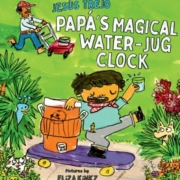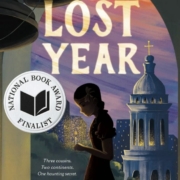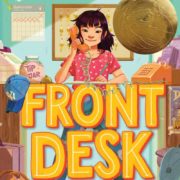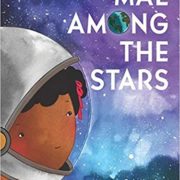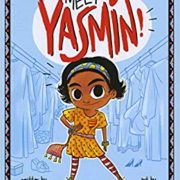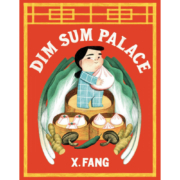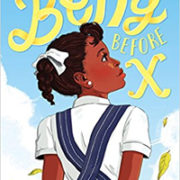Diverse Picture Books
I started this week’s review with another novel in mind, but a recent comment from a storytime attendee directed my attention elsewhere. On their way out the door, a small child stopped to look at a display book; as they did so, they told their caregiver, “Look, its me!” The child holding the book and the child on the front cover of the book both had brown skin and curly brown hair. This child saw themselves in this book; more importantly, this child saw themselves in a book in their library.
A good library has something for everyone, and I think the Joplin Public Library is no exception. We plan storytimes, as well as select, read, and display books, with all children in mind. Social media has made it especially easy to find books that reflect experiences different than my own.
When I request or select books to use in storytime, I often search the #WeNeedDiverseBooks and #ownvoices hashtags on Twitter and Google to find titles I might not see in mainstream review sources (I should mention that these aforementioned mainstream sources are taking steps to become more representative and inclusive).
In defense of my belief that the library does a great job representing various viewpoints, I would like to share a few recent picture books that depict underrepresented voices and perspectives.
THE DAY YOU BEGIN by Jacqueline Woodson, ill. By Rafael Lopez
Jacqueline Woodson’s newest picture book begins with a comforting statement that becomes a refrain of sorts: “There will be times when you walk into a room and no one there is quite like you.” This line is juxtaposed with Rafael Lopez’s soft illustration of a trepidatious young girl with caramel skin and curly black hair peering through what is presumed to be a classroom door.
Woodson’s tender, poetic voice lifts up the experiences of several children, including Rigoberto, a boy from Venezuela who speaks differently from his classmates; a presumably Korean girl whose kimchi garners strange glances from her friends; and a young white boy with a book in his hands who prefers reading over sports.
Woodson is an exceptional poet, and The Day You Begin is a testament to her skill. Woodson, who is currently the National Ambassador for Young People’s Literature, lives up to her title by representing the emotions of several underrepresented children, offering the reader a glimpse into both the joy and terror inherent in being different from your peers.
BOWWOW POWWOW by Brenda Child, Ill. by Jonathan Thunder, trans. By Gordon Jourdain
Bowwow Powwow, which is written in both the Ojibwa language and English, follows a young Native girl named Windy Girl and her silly dog Itchy Boy as they learn about the history of their people and pow wow traditions. Jourdain’s translations embody the pre-pow wow excitement that permeates the grounds as Windy Girl watches the preparations unfold, and Thunder’s colorful digital illustrations add a playful element to the powwow grounds, regalia, and anthropomorphic animals that appear in the young girl’s dream sequence.
Native people have been notoriously misrepresented in children’s literature, so a book about a modern Ojibwe girl that is written and illustrated by Red Lake Ojibwe artists is noteworthy in itself. However, Bowwow Powwow is also noteworthy because it is an enjoyable and interesting read for both children and adults.
HEY WALL: A STORY OF ART AND COMMUNITY by Susan Verde, ill. By John Parra
Hey Wall: A Story of Art and Community follows community members as they band together to turn an ugly old wall into a symbol of love, beauty, and unity. Children of various skin tones pass the wall on a regular basis, but it exists as nothing more than a sore thumb amidst the dancing, singing, and cooking that takes place around it. One day, Angel, a young boy with brown skin, takes the wall and his neighbors to task. Slowly, with the neighborhood’s help, the formerly ugly wall unfolds into a reflection of its community: creative, diverse, beautiful, and colorful. Parra’s colorful illustrations are evocative of chalk art or a mural, supporting the wall’s role as a literal reflection of the community.
In the endnotes, Parra, who is Latino, discusses the influence of muralists like Diego Rivera on his work. Hey, Wall: A Story of Art and Community turns the politicized idea of the wall on its head, championing it as a pillar of diversity and a testament to the beauty that exists when people of different backgrounds, circumstances, and races work together rather than against one another. Although the text is essential to the story, it is Parra’s illustrations that turn this book into a work of art.
Of course, these titles are not only helpful to children who yearn to see themselves in books on the shelf; on the contrary, we could all benefit tremendously from a peek into a slice of someone else’s life.

